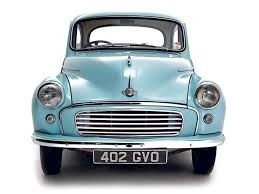Classic Car Facts, Stats & Trivia
Discussion
AAGR said:
It's amazing how many people think that the production run (200-off) of Ford's Group B RS200 car was 'built by Reliant' in 1985-1986. That's not true - the factory in question was itself an ex-Reliant building (it was where Reliant's own-brand engine had once been manufactured), and it was located at Shenstone, some miles away from Reliant's existing plant.
Talking of 200s,I saw 4 at the weekend in Germany ,including the group S car driven by John and Scott Wheeler.5 cars if I include a kit car replica too.
When the MkII Riley Elf and Wolseley Hornet were restyled into the MkIII in 1966, they were given slightly taller doors with non radiused bottom front corners, wind up windows, interior hinges and taller rear quarter windows to match, these upgrades were due to be carried out on the MkII Mini saloon range in 1967 but the funds to do so weren't available, so the Mk1 style doors were kept until the MkIII range was launched in October 1969, the Elf and Hornet went out of production at the same time. The Mk II Cooper 998 model also ceased production a month later and the MkII Cooper S carried on into February 1970 so as to use up the old style shells, the new MkIII Cooper S appeared the following month but only lasted until July '71 when Lord Stokes killed it off.
A one off MG badged Mini with an Elf / Hornet style front end was built at the factory using a 1960/61 factory hack Mini 850 shell, with twin fuel tanks, extra spotlamps and a full length Webasto sunroof it cut quite a dash and was restored by an MG enthusiast some years ago. The factory intended to put the car into production in the UK using the 1071 Cooper S as the base, this didn't happen but 456 similar cars were built by BMC in South Afrika from 1967 to 1969, badged as the Wolseley 1000, with windup windows and opening front quarterlights as per Australian built Minis.
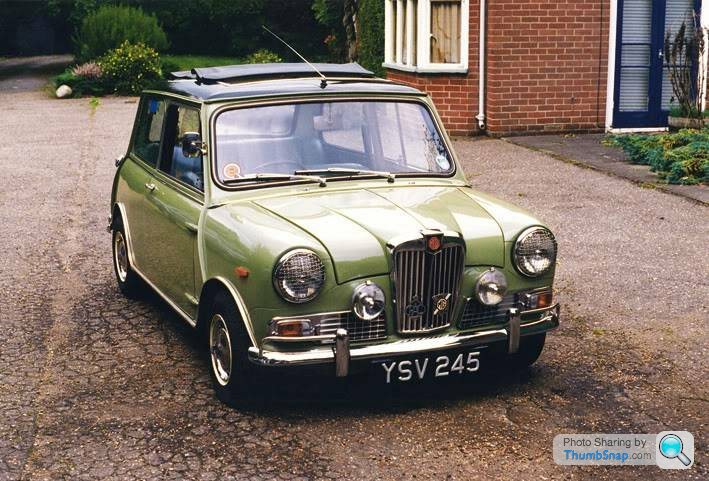
Does anyone know of a cure for the Mini bug? I've been trying to shake it off for nearly thirty years...
A one off MG badged Mini with an Elf / Hornet style front end was built at the factory using a 1960/61 factory hack Mini 850 shell, with twin fuel tanks, extra spotlamps and a full length Webasto sunroof it cut quite a dash and was restored by an MG enthusiast some years ago. The factory intended to put the car into production in the UK using the 1071 Cooper S as the base, this didn't happen but 456 similar cars were built by BMC in South Afrika from 1967 to 1969, badged as the Wolseley 1000, with windup windows and opening front quarterlights as per Australian built Minis.

Does anyone know of a cure for the Mini bug? I've been trying to shake it off for nearly thirty years...

Edited by P5BNij on Monday 23 July 13:25
Edited by P5BNij on Monday 23 July 13:27
The original Alfa GTV (1974) had an interesting instrument binnacle with the rev counter ahead of the driver and the rest of the instruments centrally positioned:
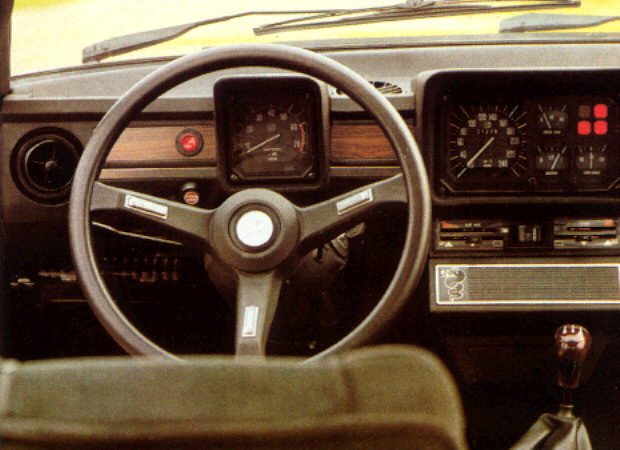
However in the RHD UK cars, the speedo was in front of the driver and the rev counter in the centre defeating the objective of both the driver focused instrument and the cost savings of a common set of gauges.


However in the RHD UK cars, the speedo was in front of the driver and the rev counter in the centre defeating the objective of both the driver focused instrument and the cost savings of a common set of gauges.

eccles said:
gothatway said:
Mr Tidy said:
eccles said:
The Morris Minor was Britains first £100 car.
Are you sure? I thought that was the Ford Popular.The original Minor in 1928 had a very nice, but very expensive OHC engine designed and built by Wolseley, using a design related to the Hispano-Suiza V8 aero engines that Wolseley had built under license during WW1. That made the Minor too expensive to build to meet William Morris' dictum that the Minor be the first 'proper' car to sell for £100. So in 1931 the Minor received a cheaper sidevalve engine which when teamed with a very basic two-seater tourer body, allowed it to squeak under the £100 mark.
The Ford Model Y Popular was the first four-seater all-steel car to be available at the magic £100, courtesy of Ford's mastery of the mass-production process and Dagenham's very modern and fully integrated production methods. The price to the dealer was £87 10s, retailing at £100 on the showroom floor. At that time Ford dealers still worked on a single-order basis (a legacy of the early days of British Model T production when Henry Ford refused to extend credit to his British agent, so every car had to be built to fulfill a specific customer order).
By the 1930s it was the dealers that placed the orders for their stock. A dealer apprentice would get the train or bus to Dagenham with the order slip for a new Model Y, hand it in at the office where it was sent into the innards of the works by pnuematic tube. From the order slip arriving at the body shop to the apprentice driving out the gate in the new car took 4.5 hours. The apprentices were supposed to stay in a dedicated waiting room but they inevitably got bored and were able to slip into the factory to find 'their' car on the line and follow it down.
AAGR said:
Early in the 1960s, when Rover was developing the new 2000, prototypes were badged 'Talago'. Later it became clear that the person running the proving programme was a Polish gentleman called 'T.L.Gawronski ....'
The Talago seen whilst riding my bicycle in 1963. I rushed home to get my camera. Some years later the prototype Range Rover was often seen here.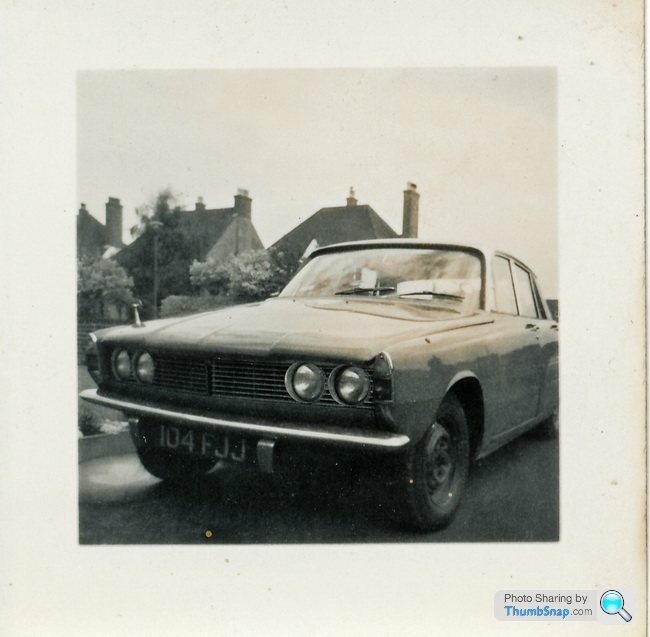
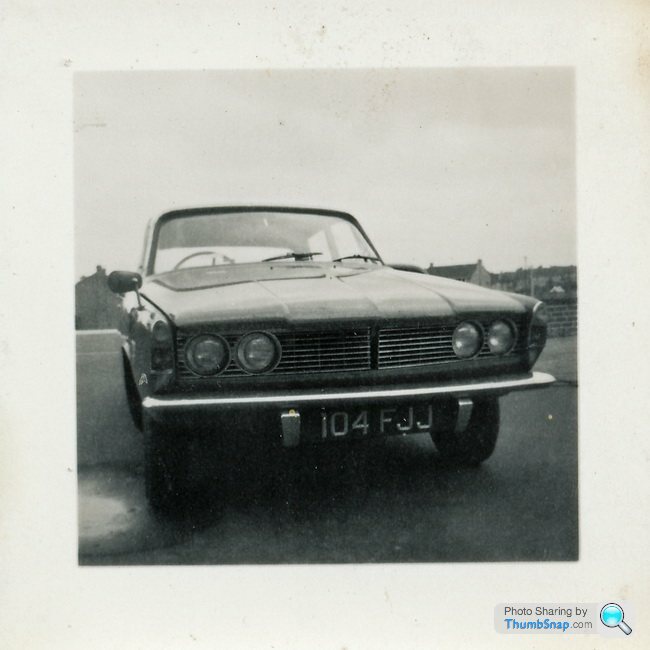
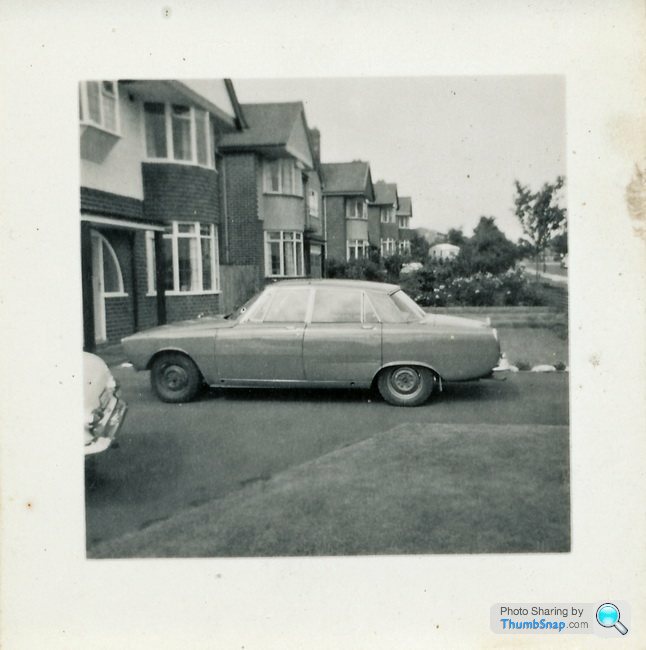
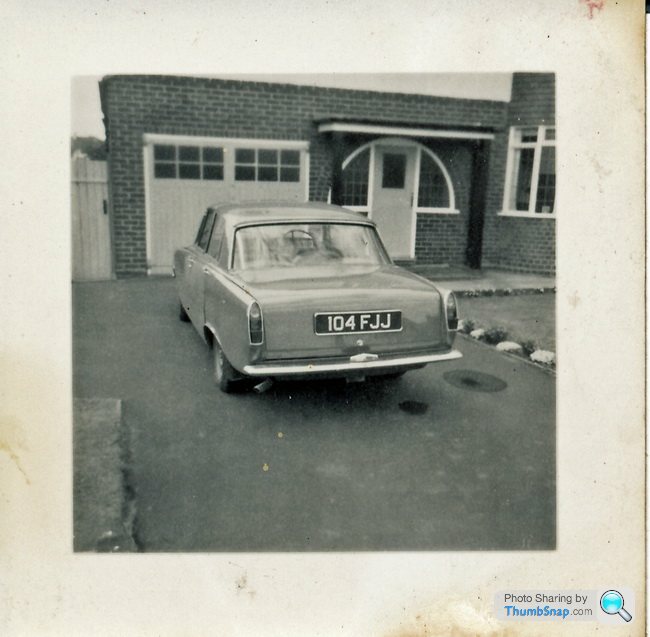
~~~~~~~~~~~~~~~~~~~~~~~~~~~~~~~~~~
Reg number 104 FJJ
Built 19/2/1963
Out of the factory 25/2/1963 (In other words into the hands of 'Rover Engineering Dept')
Registered for the road 1/3/1963
Chassis number 400-00004
Line number 4
Colour listed as 'Willow Green'
According to the dates it was the 4th P6 built on the production line and was an 'Off-Tools Prototype'
Rover trivia:
Probably Rover's greatest contribution to global transport (among several) was one of its very first - the invention of the modern bicycle in its present form as we know it today, with two (relatively) small equal-sized wheels with pneumatic tyres, a triangular frame and indirect drive of the rear wheel by chain drive from a centrally-mounted pedal crankset.
This was the Rover Safety Bicycle of 1885. The Rover badge was a brand for 'safety' cycles built by Starley & Sutton of Coventry. The first Rover was a pedal tricycle (much safer than a 'standard' penny-farthing bicycle and especially suitable for ladies) and then it became applied to Starley's range of two-wheeled safety bicycles. The design was by John Kemp Starley, nephew of James Starley, inventor of the modern differential gear and perfector of the chain drive as we know it.
In several languages (especially in Eastern and Central Europe) a localised pronounciation of 'Rover' is still the modern term for a bike, while the word derived from the literal word 'bicycle' referrs to penny-farthings, such was Rover's dominance and influence. The safety, practicality and simplicity of the Rover Safety, and its imitators, set the stage for the 'Bicycle Boom' of the 1890s and 1900s. It played a key part in the empancipation of women in the West and provided the first widely-affordable form of independent private transport. The modern utility bike, still clearly recognisable as a descendant of the Rover Safety from 1885, remains the primary means of affordable, reliable transport in huge swathes of the world. There are around two billion 'safety' bicycles in the world right now and that number is growing by 1.1 million each year. The Rover Safety Bicycle is probably one of the greatest machines of liberation ever devised.
Forget the Land-Rover, the Range Rover, the 'safety cage' bodyshell, beating the Blue Train, the BRM gas turbine racer, the first executive hatchback or the sliding de Dion Tube. Rover's greatest legacy is a bicycle.
Probably Rover's greatest contribution to global transport (among several) was one of its very first - the invention of the modern bicycle in its present form as we know it today, with two (relatively) small equal-sized wheels with pneumatic tyres, a triangular frame and indirect drive of the rear wheel by chain drive from a centrally-mounted pedal crankset.
This was the Rover Safety Bicycle of 1885. The Rover badge was a brand for 'safety' cycles built by Starley & Sutton of Coventry. The first Rover was a pedal tricycle (much safer than a 'standard' penny-farthing bicycle and especially suitable for ladies) and then it became applied to Starley's range of two-wheeled safety bicycles. The design was by John Kemp Starley, nephew of James Starley, inventor of the modern differential gear and perfector of the chain drive as we know it.
In several languages (especially in Eastern and Central Europe) a localised pronounciation of 'Rover' is still the modern term for a bike, while the word derived from the literal word 'bicycle' referrs to penny-farthings, such was Rover's dominance and influence. The safety, practicality and simplicity of the Rover Safety, and its imitators, set the stage for the 'Bicycle Boom' of the 1890s and 1900s. It played a key part in the empancipation of women in the West and provided the first widely-affordable form of independent private transport. The modern utility bike, still clearly recognisable as a descendant of the Rover Safety from 1885, remains the primary means of affordable, reliable transport in huge swathes of the world. There are around two billion 'safety' bicycles in the world right now and that number is growing by 1.1 million each year. The Rover Safety Bicycle is probably one of the greatest machines of liberation ever devised.
Forget the Land-Rover, the Range Rover, the 'safety cage' bodyshell, beating the Blue Train, the BRM gas turbine racer, the first executive hatchback or the sliding de Dion Tube. Rover's greatest legacy is a bicycle.
When testing an Aston Martin DB soft top (not sure is 4/5/6), Douglas Blain of CAR/Small Car magazine was making progress through Europe when there was an almighty explosion from above his head as the roof detached from the car. It was never found. They wrote this up in test piece.
Pierre de Vizcaya a financial backer and racing driver for Ettore Bugatti, had a bizarre death when he tried to stop his dog jumping out of his car whilst moving and fell onto the road in Paris hitting his head.
An Aston Martin specialist in London had a stroke of luck when a Middle East client started buying the hard to shift Lagonda in quantity. On arriving at a hotel in London to seal another deal he saw his client wielding a ceremonial sword, babbling and surrounded by Police. The client was sectioned and the solicitor for his family threatened to sue the dealer for stuffing a mentally ill person with so many of the same car. Believe it was settled out of court with the dealer off-loading the cars over a period of time to avoid destabilising market.
Pierre de Vizcaya a financial backer and racing driver for Ettore Bugatti, had a bizarre death when he tried to stop his dog jumping out of his car whilst moving and fell onto the road in Paris hitting his head.
An Aston Martin specialist in London had a stroke of luck when a Middle East client started buying the hard to shift Lagonda in quantity. On arriving at a hotel in London to seal another deal he saw his client wielding a ceremonial sword, babbling and surrounded by Police. The client was sectioned and the solicitor for his family threatened to sue the dealer for stuffing a mentally ill person with so many of the same car. Believe it was settled out of court with the dealer off-loading the cars over a period of time to avoid destabilising market.
Known by 'most' Ginetta enthusiasts (and hopefully some on here, but for some reason never mentioned in any Lotus or Clark biog books about the great man) but in case you don't know...
(The) Jim Clark arranged personally for his spare (practice) twin-cam engine from his winning 1965 3-Hour Sebring Race Lotus Cortina, to be fitted to the Ginetta Cars entry G4, being run by Competition Car Engineering, after the G4's twin-cam let go during practice for the main 12-Hour event.
Even better, Clark was actually offered a drive (in a then rival marque's car!).
This was the race where the heavens literally opened at one point and while several cars did not make it through the terribly flooded track, the tiny Ginetta did survive that part.
Sadly it wasn't a fairy tale ending with Clark at the wheel.
If only!
There are lots of photos out there of just how bad conditions were at one point, but this one illustrates it well!
https://c2.staticflickr.com/2/1598/25552188985_d6d...
(The) Jim Clark arranged personally for his spare (practice) twin-cam engine from his winning 1965 3-Hour Sebring Race Lotus Cortina, to be fitted to the Ginetta Cars entry G4, being run by Competition Car Engineering, after the G4's twin-cam let go during practice for the main 12-Hour event.
Even better, Clark was actually offered a drive (in a then rival marque's car!).
This was the race where the heavens literally opened at one point and while several cars did not make it through the terribly flooded track, the tiny Ginetta did survive that part.
Sadly it wasn't a fairy tale ending with Clark at the wheel.
If only!
There are lots of photos out there of just how bad conditions were at one point, but this one illustrates it well!
https://c2.staticflickr.com/2/1598/25552188985_d6d...
_Sorted_ said:
When testing an Aston Martin DB soft top (not sure is 4/5/6), Douglas Blain of CAR/Small Car magazine was making progress through Europe when there was an almighty explosion from above his head as the roof detached from the car. It was never found. They wrote this up in test piece.
Pierre de Vizcaya a financial backer and racing driver for Ettore Bugatti, had a bizarre death when he tried to stop his dog jumping out of his car whilst moving and fell onto the road in Paris hitting his head.
An Aston Martin specialist in London had a stroke of luck when a Middle East client started buying the hard to shift Lagonda in quantity. On arriving at a hotel in London to seal another deal he saw his client wielding a ceremonial sword, babbling and surrounded by Police. The client was sectioned and the solicitor for his family threatened to sue the dealer for stuffing a mentally ill person with so many of the same car. Believe it was settled out of court with the dealer off-loading the cars over a period of time to avoid destabilising market.
On the topic of unexpected car deaths, Isadora Duncan was killed when her long, flowing scarf wrapped around the axle of the Amilcar she was in, breaking her neckPierre de Vizcaya a financial backer and racing driver for Ettore Bugatti, had a bizarre death when he tried to stop his dog jumping out of his car whilst moving and fell onto the road in Paris hitting his head.
An Aston Martin specialist in London had a stroke of luck when a Middle East client started buying the hard to shift Lagonda in quantity. On arriving at a hotel in London to seal another deal he saw his client wielding a ceremonial sword, babbling and surrounded by Police. The client was sectioned and the solicitor for his family threatened to sue the dealer for stuffing a mentally ill person with so many of the same car. Believe it was settled out of court with the dealer off-loading the cars over a period of time to avoid destabilising market.
When Volvo decided to re-number it's model range from things like 940 and 240, they ran into trouble with Audi.
The Germans weren't happy that the new Volvo saloon was to be called the S4 followed by a bigger saloon called the S6. The addition of a zero sorted things.
Rover and Land Rover gearboxes were named LT then a number. Allegedly LT stands for Leyland Trucks.
The Germans weren't happy that the new Volvo saloon was to be called the S4 followed by a bigger saloon called the S6. The addition of a zero sorted things.
Rover and Land Rover gearboxes were named LT then a number. Allegedly LT stands for Leyland Trucks.
Wildcat45 said:
When Volvo decided to re-number it's model range from things like 940 and 240, they ran into trouble with Audi.
The Germans weren't happy that the new Volvo saloon was to be called the S4 followed by a bigger saloon called the S6. The addition of a zero sorted things.
Rover and Land Rover gearboxes were named LT then a number. Allegedly LT stands for Leyland Trucks.
My version of that rumour is that 'LT' stood for 'Leyland Transmission'.The Germans weren't happy that the new Volvo saloon was to be called the S4 followed by a bigger saloon called the S6. The addition of a zero sorted things.
Rover and Land Rover gearboxes were named LT then a number. Allegedly LT stands for Leyland Trucks.
2 sMoKiN bArReLs said:
Not exactly a classic...
....but if you Google what Pajero means in Spanish you'll understand why it was renamed Montero or Shogun in certain markets. How did they get that so wrong?
Chevy couldn't sell the Nova in Spanish speaking countries.....but if you Google what Pajero means in Spanish you'll understand why it was renamed Montero or Shogun in certain markets. How did they get that so wrong?

At one point Buick wouldn't sell the LaCrosse in Quebec
Mazda's Laputa is Spanish for prostitute if the syllables are separated.
Honda reportedly ditched the name Fitta for its latest subcompact — going with Fit instead — because in Scandinavian countries it's a rude word for a woman's private area.
Pinto, is Spanish for a small spotted pony but also Brazilian Portuguese slang for penis.
2xChevrons said:
Rover trivia:
Starley's Grandson?? ran a garage in Brighton - Hythe Road, Fiveways - until 15-20 years ago.I used them once because they had a half price MOT offer, it passed so I thought they were OK then someone I worked with told me he'd seen them on Watchdog because of ripping customers off!
The garage has now been demolished and houses built probably much to the relief of the neighbours, the forecourt and load were always full of all sorts of crappy cars and vans that never moved.
The Surveyor said:
_Sorted_ said:
2 sMoKiN bArReLs said:
...Or the glass!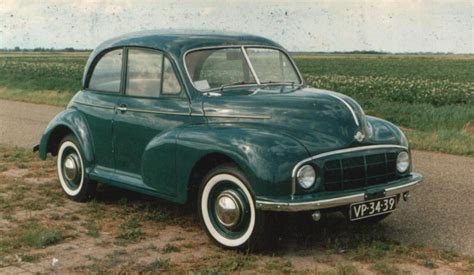
irocfan said:
2 sMoKiN bArReLs said:
Not exactly a classic...
....but if you Google what Pajero means in Spanish you'll understand why it was renamed Montero or Shogun in certain markets. How did they get that so wrong?
Chevy couldn't sell the Nova in Spanish speaking countries.....but if you Google what Pajero means in Spanish you'll understand why it was renamed Montero or Shogun in certain markets. How did they get that so wrong?

At one point Buick wouldn't sell the LaCrosse in Quebec
Mazda's Laputa is Spanish for prostitute if the syllables are separated.
Honda reportedly ditched the name Fitta for its latest subcompact — going with Fit instead — because in Scandinavian countries it's a rude word for a woman's private area.
Pinto, is Spanish for a small spotted pony but also Brazilian Portuguese slang for penis.
Gassing Station | Classic Cars and Yesterday's Heroes | Top of Page | What's New | My Stuff



